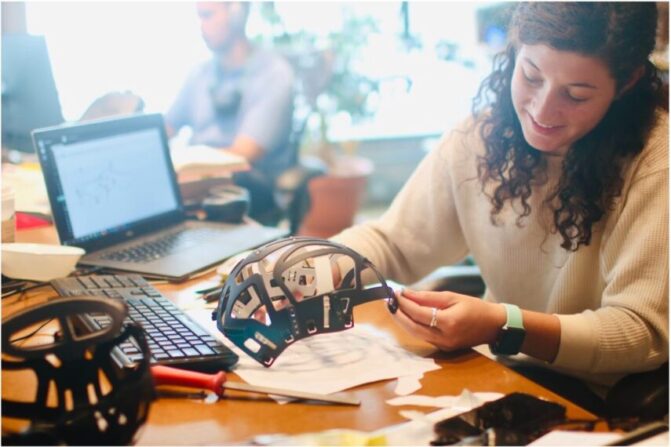Do you have an idea that you think could change the world or at least make someone’s life easier? That’s the essence of an invention—a new product, process, or technology designed to solve a problem or fill a need. The key elements of inventing are creativity and innovation, which involve thinking outside the box and bringing fresh perspectives to old problems.
The goal of this blog post is to give you a roadmap for coming up with your own inventions, step-by-step. We’ll talk about everything from nurturing a problem-solving mindset to the nitty-gritty of legal considerations.
The Problem-Solving Mindset
Inventing begins with the right mindset. If you want to invent something, you need to cultivate a problem-solving mindset. This means that you view challenges not as roadblocks, but as opportunities to innovate. For example, let’s say you’re annoyed by how quickly your phone battery dies.
Instead of just complaining about it, a problem-solving mindset prompts you to think of potential solutions. Could a more efficient app solve the issue? Is there a way to make batteries last longer? Could a portable, fast-charging device offer a remedy? This is how inventors think. They see problems as a starting point for creative solutions. The more problems you identify, the more opportunities you have to invent something groundbreaking.
Observation and Curiosity

The art of observation is critical in the invention process. Pay close attention to what’s happening around you. This could mean observing people’s habits, recognizing inefficient systems at work or in public places, or simply identifying annoyances in daily life.
For example, you might notice that many people struggle to keep their earbuds from getting tangled. This observation could spark your curiosity to find a solution, such as a new earbud design or a storage case that prevents tangles. The key is to be curious. Ask yourself questions about why things are the way they are, and let your inquisitive nature guide you towards potential improvements.
Identifying Needs and Gaps
Before you rush to create a prototype, you should identify the specific needs or gaps that your invention will address. This involves looking at the market or the daily environment to see what’s missing or could be improved. A classic example is the smartphone, which effectively combined a phone, computer, and camera into one portable device, filling a gap in the market for integrated technology.
Similarly, perhaps you’ve noticed that there’s a lack of affordable, eco-friendly cleaning products in your local stores. That’s a gap you might fill with an invention. To make your invention successful, it should either offer a better solution to an existing problem or address a problem no one else has solved yet.
Brainstorming Ideas

Once you identify a need or gap, it’s time to brainstorm possible solutions. At this stage, focus on quantity over quality. Write down as many ideas as you can without worrying about how feasible they are. The more ideas you have, the better, as it gives you more material to work with later.
Techniques for effective brainstorming include mind-mapping, free-writing, and even discussing ideas with trusted friends or colleagues. Remember, many inventions started as “crazy ideas” that people were initially skeptical about, so don’t limit your thinking. When you have a long list of potential solutions, you can start to sift through them to find the most promising ones.
Research and Market Analysis
After brainstorming, the next step is to conduct research. You need to find out if similar products or solutions already exist and how your invention can be different or better. The additional info you collect from competitors can give you insights into market trends and consumer needs
. Utilize online databases, surveys, and interviews to collect data. Understanding the market will help you refine your invention to better meet consumer demands and distinguish it from existing products.
Prototyping and Testing

With your research in hand, you can start creating a prototype. This is a preliminary model of your invention that allows you to test its functionality. The prototype doesn’t have to be perfect; it just needs to be good enough to test your concept. Use materials that are easy to work with and relatively inexpensive, like cardboard or simple software programs.
Once the prototype is ready, test it rigorously. Take notes on what works and what doesn’t. Make necessary adjustments and keep testing until you have a model that effectively solves the problem you identified.
Collaboration and Feedback
Working alone has its limits. Bringing other people into your invention process can add value in many ways. They can offer new perspectives, skills you don’t have, and even connections to resources like funding or manufacturing. Share your prototype with people you trust and gather their feedback.
Others may see flaws or opportunities for improvement that you didn’t notice. Plus, discussing your invention with others can lead to collaborative problem-solving and innovation. You never know—a casual conversation could lead to the breakthrough you’ve been seeking.
Persistence and Adaptability
The road to a successful invention is rarely smooth. You’ll encounter obstacles, from technical challenges to financial limitations. Persistence is crucial to overcome these hurdles. Don’t give up when things get tough. Instead, adapt and refine your idea based on what you’ve learned from setbacks.
Say your prototype isn’t working as planned. Instead of abandoning the project, use what you’ve learned to make it better. Every failure is a learning opportunity that brings you one step closer to a successful invention.
Legal Considerations

If you think you’ve got a winner on your hands, it’s time to think about protecting it. This involves legal considerations like patents and intellectual property laws. A patent gives you the right to prevent others from making, selling, or using your invention for a certain period, usually 20 years.
Research thoroughly to make sure your invention doesn’t infringe on existing patents. Consulting a patent attorney can help you navigate the complex legal landscape. Understanding the legal aspects is crucial because it safeguards your invention from being copied and allows you to take legal action if someone does.
To make sure the whole patenting process goes without a problem, we recommend you take a look at our informative article that will help you avoid common patent pitfalls ensuring a smooth process.
Turning Ideas into Reality
Now comes the big step: taking your refined, legally protected idea from a concept to a marketable product. This is where your research and market analysis pay off. Develop a business plan, secure funding, and move into production. If possible, start small to test the market’s reception.
From there, you can scale up. For inspiration, read more about inventors who took their ideas from mere concepts to revolutionary products. Their journeys highlight the importance of every step mentioned in this blog post.
Conclusion
Inventing is a complex but rewarding process. It starts with a problem-solving mindset and extends through observation, brainstorming, research, and eventually, market production. Remember, the journey is often as important as the destination. Each step, even the setbacks, teaches you something valuable. So go out there and start inventing. Who knows, you might just unlock your own genius.
Related Posts:
- Love Island spoilers- What New Will Come This Week?
- Dating After 50 is Not an Issue! Come and Find Your…
- Why Do Games Come With Special Labelling On Their Pack?
- Unlocking Economic Development ─ Diverse Strategies…
- Unlocking the Power of Orbital Sanders: A Versatile…
- Unlocking User Delight: Mastering Visual Hierarchy…








